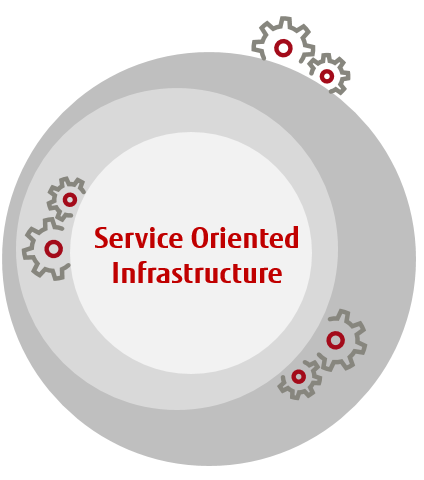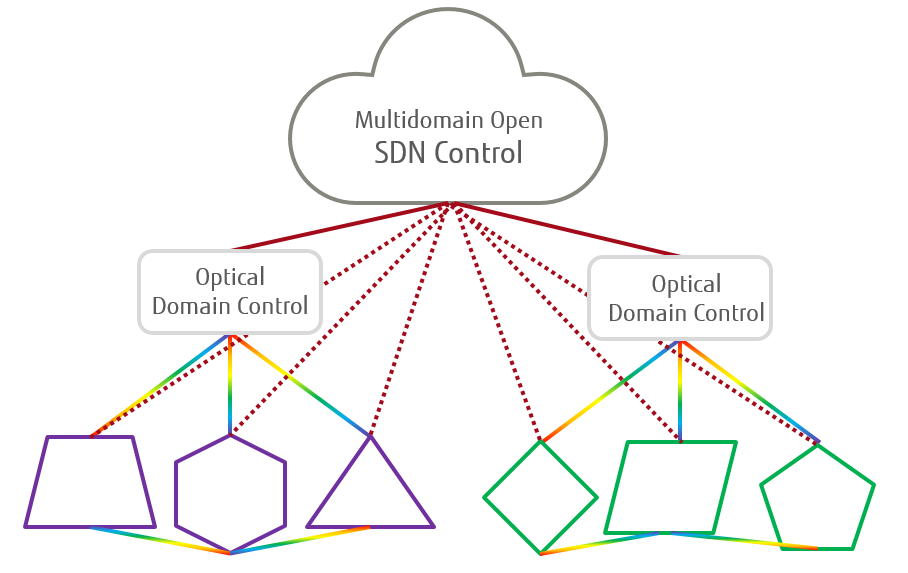
The optical network “disaggregation conversation” has evolved steadily over the past ten years. Starting with “that’s nuts,” consensus moved through “maybe we’ll try it in the lab” to “how much disaggregation can we tolerate right now?” This is because the new service types made possible by rapid adoption of 5G, IOT, and cloud technologies have accelerated the need for programmability and automation in Layers 0-2. A partially disaggregated optical network, with open software control and open transponders, is a reliable route to a much-needed service-oriented network infrastructure.

Classic optical network architectures were designed around the characteristics of traditional services, such as predictable traffic patterns. Today, however, a service-oriented optical infrastructure is urgently needed. The answer is to partially disaggregate the optical layer and decouple network software from network hardware. This will provide the flexibility network architects need to add new service types faster, increase capacity on the fly, and push out maintenance to discrete portions of the network while centralizing operations.
Open Transponders and Open Software Control
Optical network service offerings continue to diversify, including best-effort low-cost service; dedicated high-speed connectivity; and enforceable service guarantees such as low latency and security. Partially disaggregated optical networks allow service providers to choose transponders from multiple vendors. This freedom of choice lets network architects precisely target equipment investments for different bandwidth needs and service levels, or to provide individualized value-added features for specific network segments, with the right equipment.
Deploying a partially disaggregated optical network with open transponders and open software control will deliver the benefits and flexibility of vendor choice and faster technology integration. And cloud-capable network automation at the optical layer aligns the total value of lower-layer resources directly to customer services orchestrated by the upper layers of the network. Open implementations transform the optical layer from a chronically over-provisioned dumb connection into an intelligent and more lightweight infrastructure with a clear path to revenue.
A Hierarchical Approach to Network Control
An open, hierarchical SDN controller connects and controls multiple vendor domains, automatically and transparently discovering distributed components and controlling the optical transport network as a unified whole. In the context of partially disaggregated optical networks, where one vendor’s open transponders are running over another’s open line system, the hierarchical SDN controller approach also allows for end-to-end control and management across systems from multiple vendors.

The multivendor SDN controller performs complex functions and tasks such as topology, path computation, and end-to-end service control. Optical parameters including modulation format, output power level, and central frequency are configured and dynamically adjusted by domain controllers. This structure allows a centralized network operations team to perform extended administration and operations tasks like policy development and intent-based networking, while using domain controllers to perform sub-tasks based on pre-configured service templates that normalize service delivery concurrently across multiple vendors.
Testing is simplified as well. Open control systems, open line systems (OLS), and open transponders can be tested by function and deployed ubiquitously across the network, eliminating process redundancies in network silos. The operations efficiencies continue to improve as new vendor domains are introduced to the digital infrastructure.
Open APIs and Standard Protocols Deliver Streamlined Interoperability
In an open and disaggregated network, a hierarchical SDN controller provides end-to-end integration with upper layers and OSS/BSS clients, while managing multivendor OLS domains and open transponders southbound through standardized APIs. Open APIs also allow OSS/BSS integration work with the optical layer to remain inside the realm of optical expertise, avoiding lengthy delays and mistakes that optical novices inevitably make.
Open Southbound APIs based on standardized data models such as OpenConfig (device model) and TAPI (network/service model) make it possible for the hierarchical controller to maintain communications with all domain controllers and network elements, automatically resynchronizing local data stores in case of southbound loss of communications.
Enabling Advanced Digital Capabilities
CSPs can no longer afford “set it and forget it” static connections for the lower layers of the network stack. Network automation is a necessity for the service granularity, hyper-scalability, and resilience that digital services require.
At Fujitsu, we believe the key to digital transformation is open technologies that invite innovation and speed. Fujitsu actively contributes to industry consortiums and open-source communities, helping drive open standards, common models, and new APIs. With Fujitsu network automation solutions, anyone can build a network around offerings and services powered by open software.